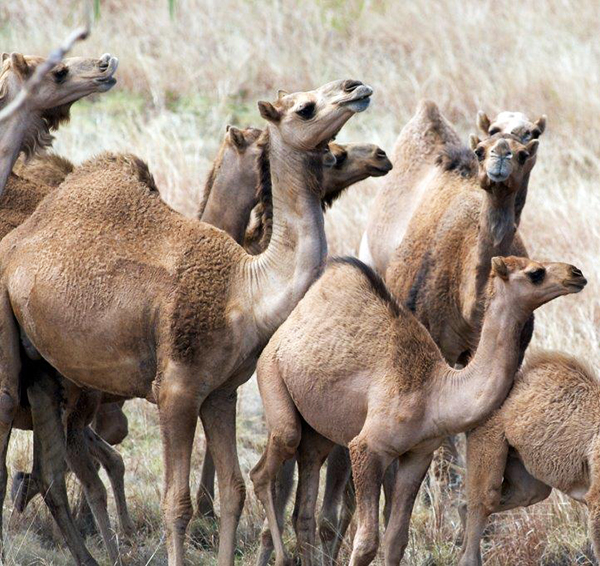Feral camel
Feral camels are found in over 37% of mainland Australia.
In the Northern Territory (NT), feral camels are found in over 40% of the land area.
Camels were first introduced into Australia from the Canary Islands in 1840. There are now over one million feral camels in Australia and that population may double in size every nine years.
Feral camels are found across Central Australia and in the Victoria River District regions.
Impacts
In Central Australia, feral camels feed on more than 80% of the available plants. In much of the NT there are more than two camels per square kilometre, which causes serious impact on native vegetation.
They are particularly destructive to the curly pod wattle, bean tree, quandong, plumbush and supplejack.
This damage has increased in drier years. Important food plants used by Aboriginal people are also seriously affected by camel grazing.
Feral camels have an impact on fragile salt lake ecosystems and foul waterholes, which are important sites for Aboriginal people and for native plants.
They also contribute to erosion by destabilising dune crests.
Camels damage stock fences, often over hundreds of metres, and infrastructure at cattle watering points.
Management
Management of feral camels is not consistent and has little impact on populations overall.
Management falls into three categories:
- fencing off key areas to keep out feral camels.
- live harvest of feral camels for commercial sale
- ground and aerial culling - in the NT aerial shooting is done by Parks and Wildlife contractors with the cost of helicopter hire and ammunition being paid by the land manager.
Although aerial shooting of large animals like horses and camels is an emotive issue, it is the most effective and humane way to cull large feral herbivores in remote areas that are hard to access.
Feral camels move over large areas so buffer zones are needed in arid regions to protect environmentally sensitive areas.
Give feedback about this page.
Share this page:
URL copied!
